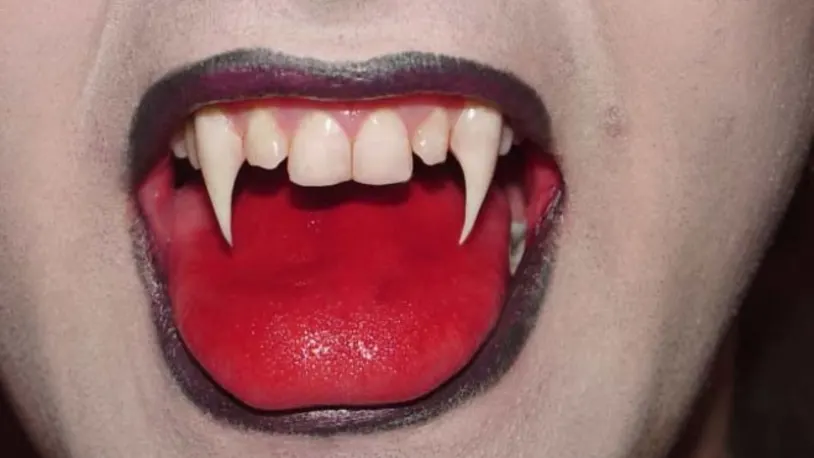Facts About Vampires

Vampires need no introduction to anyone especially those if you at least a teenager. Even though none of us alive today or reading this have seen a vampire before but the numerous stories about vampires have been a made a part of our modern culture, either through movies, books or other forms of arts. But what do you really know about vampire? we would answer that question with the most interesting vampire facts. Fun vampire facts that would make you smile but still leave in awe.
While, everything we know about Vampires come from different folklores, there was a time in history when vampires were believed to be real and active hence why the belief about their existence is hard to cast away. Whether you believe vampires exist or not, we would leave you to come whatever conclusion you want with these mind blowing facts on vampires.
A quick vampire fact is about the name vampire and its origin. The name originates from an Albanian word Dhampir which when translated to English means ‘to drink with the teeth’ classical of how vampires are depicted to drink blood with their teeth
Facts About Vampires
- Vampires Have Been in existed for Years
Numerous cultures have been familiar with the vampire myth for centuries. Ancient Greece, whose civilization existed from 1200 BCE to 323 BCE, is where the vampire’s history begins. There were reports of people being attacked and having their bodily fluids drained during this time (they took this as a sign of vampirism). While the modern vampire consumes its victim’s blood, these attacks undoubtedly marked the beginning of the vampire era.
- Vampires Take Blood
Vampires attack and consume blood, as depicted in the movies, primarily for their own survival. Although it might seem unimportant, not all vampires enjoy drawing blood from living things (mostly humans). In the same way that humans need to eat and drink to survive, vampires depend on blood consumption. Vampires are believed to ingest bodily essences other than blood, such as thoughts, saliva, and fluids exchanged during sexual activity. Although all vampires must consume blood, some representations of vampires prefer not to harm or kill people, so they instead consume animal blood.
- Vampires Manipulate the Mind A whole Lot
Depending on the source, the vampire myth contains a variety of abilities. One of these abilities is the ability to consume and/or control the thoughts of a victim. For instance, in some depictions, it’s implied that vampires can feel their victims’ emotions and, to varying degrees, can absorb their thoughts. Through coercion, vampires may also be able to influence their victims’ thoughts. Often in popular culture, vampires use compulsion to erase the memories of their human victims; this enables a vampire to look into a human’s eyes and alter their memories and thoughts.
- Why Vampires Are “Undead”
The fact that vampires are supernatural beings that fall under the category of the “undead” allows them to possess many powers. Their daily needs for sustenance and methods of reproduction are different from those of living or dead beings because they are undead figures.
- How Vampires Reproduce
Vampires do not reproduce in the same ways that other living things do. Creating more vampires can be helpful in increasing the size of a clan or coven. For example, a vampire can turn a mortal into another vampire by biting them and not draining them of their blood; this entails the transfer of vampire blood and/or venom to the human and the human living after the vampire finishes feeding, like in The Twilight Saga novels and films. Another way for vampires to turn humans into vampires is by killing a human who has vampire blood in their system and then drinking human blood once they awaken, which occurs in The Vampire Diaries television show and books. This process relies on a blood exchange and the death of the human with vampire blood in their veins. Once they awaken “in transition,” they must feed on human
- How Dracula Became a Vampire
The most well-known vampire in the genre, Count Dracula from Bram Stoker’s Dracula, spreads his blood and venom by biting humans, but it’s debatable how he became the “original” vampire. In the vampire novel Bram Stoker’s Dracula, it is assumed that Count Dracula uses his intensive knowledge from schooling and some “black magic” to make him immortal. In the Dracula movie directed by Francis Ford Coppola, Dracula turns into a vampire in response to his wife’s rejection by Heaven. Due to false reports that Dracula died in battle as a soldier, his wife Elisabeta also kills herself, preventing her soul from remaining pure and entering Heaven. As a result, Dracula uses black magic to transform into a vampire out of undying love for his late wife. Using her damnation, he turns into a vampire to begin the vampire race in this universe. Black magic and suicide are the final two standard ways to become a vampire. In other film and television adaptations of Dracula, there is a backstory of another vampire starting the vampire race.
- How to Kill Vampires
According to vampire lore, the most common methods of killing a vampire are a wooden stake driven through the heart, sunlight, decapitation, removal of the heart, and contact with fire. Other things that harm vampires and/or lessen their abilities include garlic, running water, and things connected to Christianity like crucifixes and holy water. If the deed is in a human’s name, vampires frequently need to be invited inside the human’s home. This provides an extra layer of defense against human egress as well as a chance for a human to give the vampire their “consent” to enter their residence. This is actually one of the most important vampire fact to learn in my opinion, in case we are ambushed by vampires in our cities, we need to know how to kill them.
- The Vampire Connection to “Vlad the Impaler”
Although the origins of the vampire legend can be traced to ancient Greece, Vlad III of Wallachia is actually the inspiration for the most well-known vampire, Count Dracula. The ancestors of Vlad III became honoured in the Order of the Dragon, a noble warring family, which is where “Dracul” and “Drac” were derived, hence the modern vampire name Dracula. Since Vlad III had a blood compulsion and a propensity for impaling his enemies to kill them, he was also known as “Vlad the
Many people believe that Vlad the Impaler invited hundreds of boyars—Russians who were at the highest level of the old aristocracy—and stabbed them before hanging their bodies from stakes for everyone to see. One instance of Vlad’s despicable behavior that led to the moniker “Vlad the Impaler” is this gruesome practice.
- The Vampire Disease: Porphyria
The uncommon genetic blood disorder porphyria is frequently linked to vampire-like traits. A buildup of porphyrin, which aids haemoglobin in delivering oxygen to the bloodstream, is referred to as this group of diseases. It makes the skin look sallow and can occasionally cause the skin to be yellow and stretch. People who have this condition may also have itchy or inflamed skin, making them sensitive to light and photography. Reddish or dark brown urine is possible. Last but not least, if symptoms are not properly treated, people may eventually become insane. These symptoms led to porphyria becoming known as “the vampire disease.”
- Why Vampires Lack a Reflection
It’s a common misconception that vampires lack a reflection as a result of their “soullessness.” Given that vampires consume human blood and defy human limitations on their ability to age and gain power, this is related to the perverse nature of vampires. Another explanation is that vampires are demonic beings that should not be viewed. Soulless creatures can be symbolic of non-stable entities, indicative of a vampire’s ability to shape-shift into and/or control bats, rats, wolves, etc.
The above are some of the most fun vampire facts we could put together in this facts compilation, due to the nature of stories and information surrounding the topic of the existence of vampires, there are lost of questions constantly being supplied by fans of vampire movies and books that want to satisfy their curiosity on the topic of vampires. These frequently asked questions about vampire facts we would answer in the following section
FAQs About Vampire Facts
What are 5 facts about vampires?
These are 5 facts about vampires;
- The name vampire comes from an Albanian word ‘Dhampir’ which means ‘to drink with the teeth’.
- Vampires have no reflection.
- Vampires are repelled by garlic
- There’s a sickness known as disease, it’s name is Porphyria.
- Vampires existed several years ago
What powers do vampires have?
Vampires are known to be very powerful and possess the following powers;
- The power of immortality
- The ability to grow their teeth.
- Unbelievable physical strength
- Much better sense of sight than normal human beings
- The ability to levitate and fly.
How are vampires created?
The most well known method through which vampires are created is by getting bitten by another vampire. Anybody bitten by a vampire becomes a vampire.
What do vampires hate?
Vampires are known to hate sunlight, garlic, crucifix, holy water and running water. Vampires are also known to hate to silverwares.
What are vampires afraid of?
Vampires are afraid of the following; sunlight, garlic, crucifix, holy water and running water. Vampires are also known to hate to silverwares.
Can vampires drink water?
The ability of a vampire to drink water depends on how far gone they’ve been a vampire. A newly made/born vampire can drink water and et food like a human being.
Can a vampire get pregnant?
No, vampires can not get pregnant. They’re unable to get pregnant because most human aspect of them are all dead, frozen or gone and not functioning like those of a human.
Can vampires fly?
Vampires are known to be able to levitate and fly, also the ability of a vampire to do all of these depends on what region of the world it originates form.
